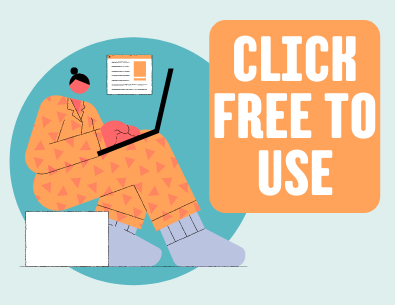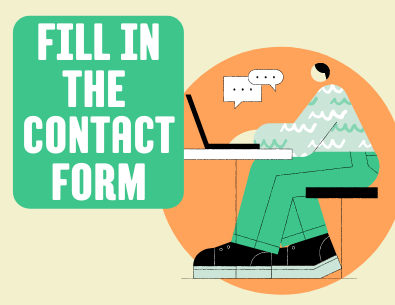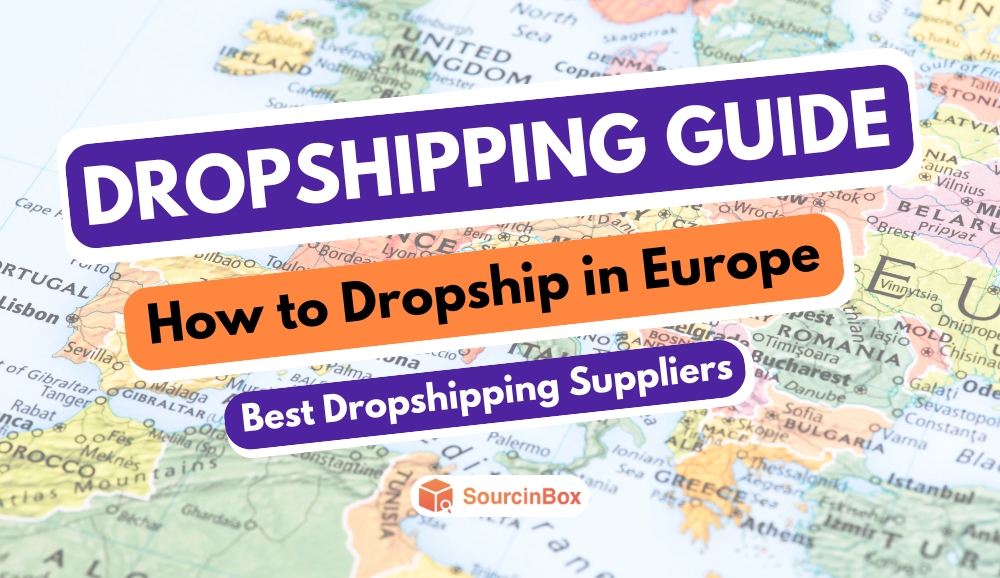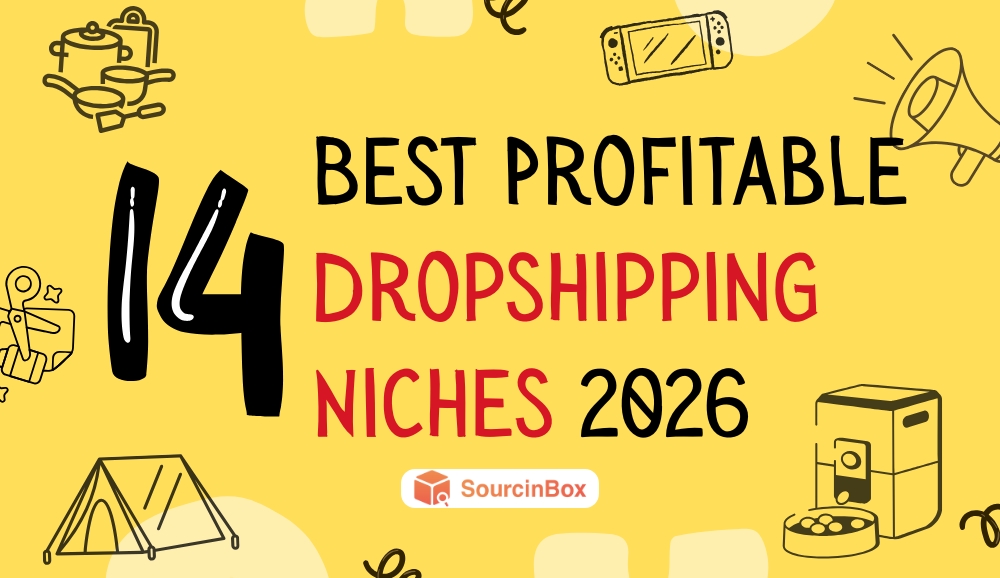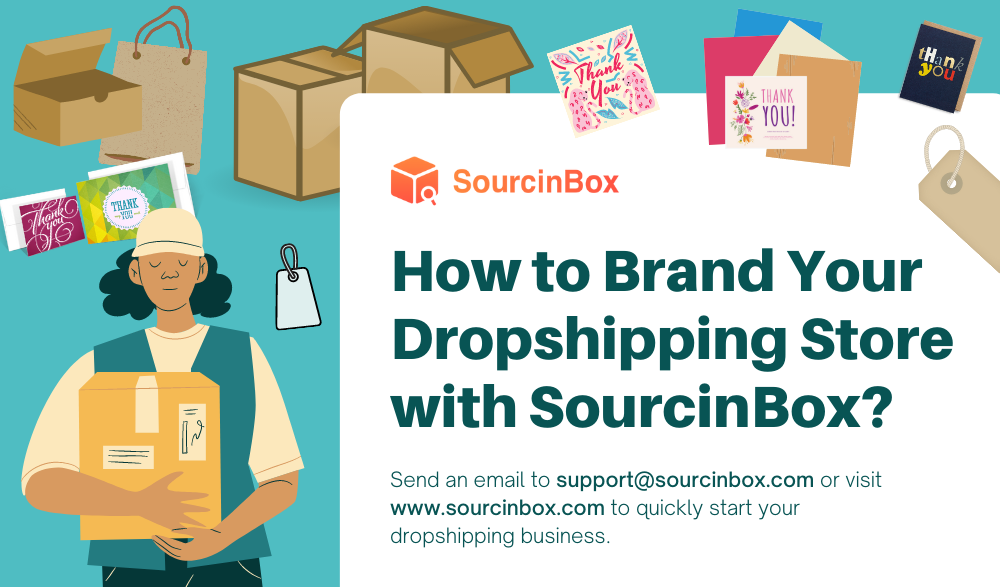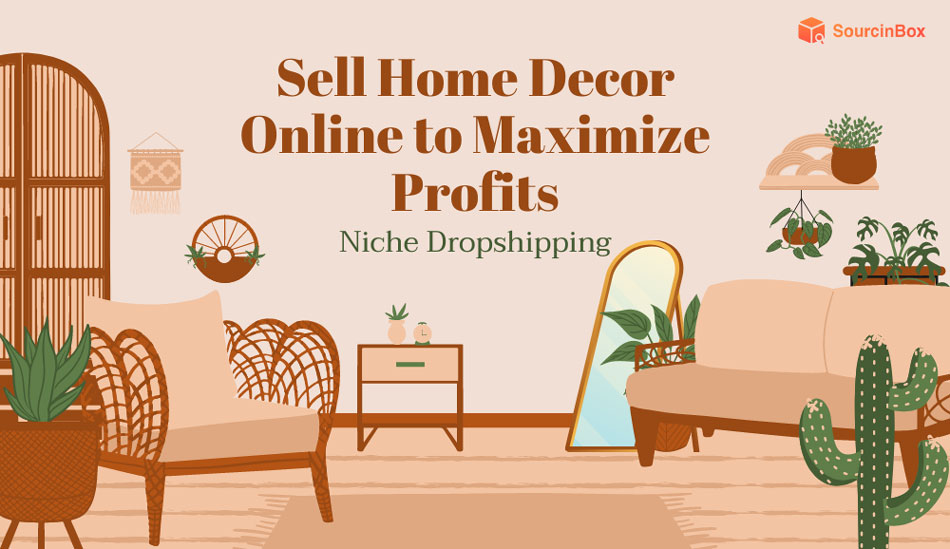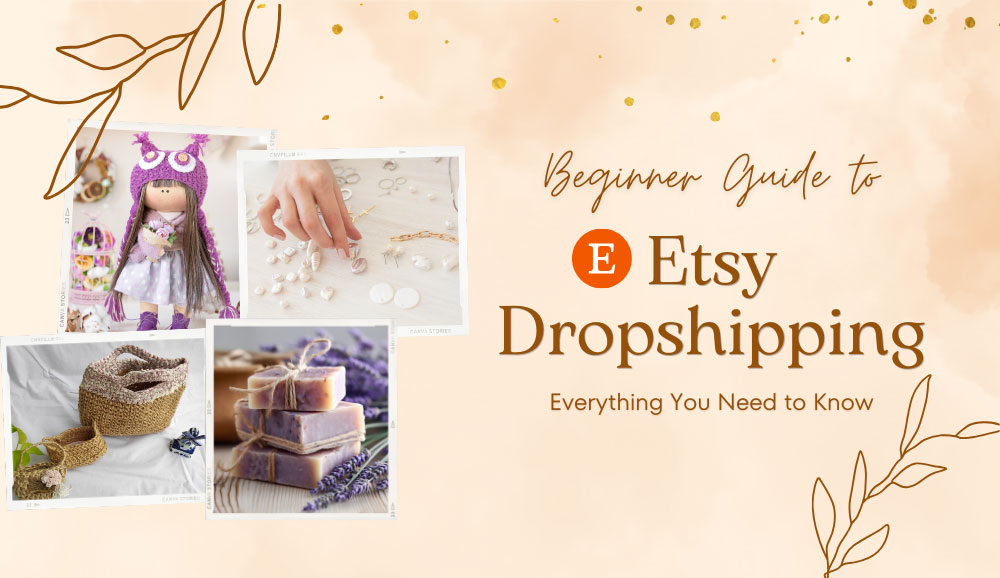How to Start a Print-on-Demand Dropshipping Business?

SIB Content Team
As we all know, dropshipping is a business model that allows you to sell online without keeping inventory. On that basis, the increasing consumer demand for customized and personalized products makes print-on-demand(POD) a growing popular business model for brands to stand out from the competition.
The global print-on-demand market size was valued at USD 6.18 billion in 2022 and is expected to grow at a CAGR of 25.8% from 2023 to 2030. If you are looking for a flexible and scalable side hustle at home to earn up to $10,000 per month, then the POD business model is the perfect choice for you! Dropshipping sellers can also transform into the POD model to get higher profits and brand loyalty!
Well, in this article, we’ll take you through the pros and cons of print-on-demand and provide a step-by-step guide to get you started!
What is Print-on-Demand?
Print-on-demand is a business model that allows you to sell customized products (such as t-shirts, posters, backpacks, and others) online with your own designs and logo. The products are only produced and printed when an order is received. You don’t need to buy in bulk or hold any inventory in advance. The third-party POD supplier will handle the production, printing, shipping, and everything after the sale.
This is basically the same as the dropshipping model, the only difference is that POD gives you more flexibility in selling products that are designed by yourself.
Pros and Cons of Print-on-Demand
Let’s start by evaluating the print-on-demand business model and look at the advantages you can gain from it and the challenges you may need to overcome.
The Advantages of POD
Low startup costs. Since you don’t need to buy products in bulk, you only need to invest in store set up, designs, product samples, and marketing. The startup cost is almost the same as starting a dropshipping business.
No need for inventory. In the traditional retail model, selling customized products has a lot of limitations. You’ll have to keep product inventory because suppliers usually require MOQs when you customize products with your designs. However, in the print-on-demand model, products are printed according to your order quantity. You won't even touch the products because the supplier will directly ship them to the end customers.
Flexibility and scalability. It allows you to work at home with only a computer and you can work part-time or full-time. And you can only invest in more product categories and marketing work to scale your business. As sales increase, it will be more cost-effective.
Higher income potential. If you like art creation and design, the print-on-demand model is a great opportunity to transform your designs and art into passive income. You have the potential to earn more because the pricing for personalized products is usually higher than for general products.
The Challenges of POD
Low-profit margins. For customized products, buying in bulk is usually more cost-effective than buying only one product. So the product sourcing cost of print-on-demand is higher than a traditional business. You may need to squeeze profit margins to stay competitive.
Longer fulfillment time. The print-on-demand product is produced after an order is generated. The production takes a few days so the fulfillment time is longer than in dropshipping.
Limited quality control. Product quality matters for personalized products. However, It is hard to control the product quality because you will totally outsource the production, printing, and shipping to a third-party supplier.
Hard to deal with returns. When you receive the returned products from your customers, you are not able to return them to the suppliers because custom-made products are hard to repurpose. So the challenge is that you may bear the loss of print-on-demand product returns.
5 Steps to Start a Print-on-Demand Business
Learning the pros and cons of print-on-demand, you must still be interested in starting a print-on-demand business. We will guide you through the 5 essential steps below and include some tips to help you easily set up the business.
1. Define Your Niche and Products
Based on product, the print-on-demand market is classified into apparel, home decor, drinkware, accessories, and others. The home decor segment is expected to register the fastest CAGR of 27.5%. It can be the evergreen print-on-demand niche you can choose.
The following are popular product choices of different niche for beginners.
• Apparel - t-shirts, hoodies, tank tops, and other print-on-demand clothing.
• Home Decor - wall art, canvas prints, posters, throw pillows, etc.
• Accessories - phone cases, tote bags, mugs, hats, and print-on-demand jewelry.
• Stationery - notebooks, journals, notepads, pens, stickers, etc.
• Drinkware - mugs, water bottles, straws, coasters, cup sleeves.
Tips: If you haven’t got any idea, it is recommended to think about a niche that you are passionate about. And you can find product inspiration on marketplaces or from your competitors.
2. Create Your Product Designs
Your product designs and styles will mainly depend on your target market and audience. Designing your product to impress your audience is a key factor in achieving a successful print-on-demand business.
You can include elements that are easy to identify in your product designs, such as holiday themes, pop culture, art creations inspired by popular games or movie elements, etc. Unique original designs by yourself are also perfect ideas!
Besides, pet designs can not go wrong with increasing consumer demand in the pet niche. And you can offer personalized options for your customers to print elements about their pets on products.
Anyway, it will be exciting to have your own personalized design or art printed on each product. If you don’t have much expertise in design, there are some powerful tools that can help you get inspiration, make the designs, and generate product mockups.
• Canva
Canva is a powerful drag-and-drop design tool that has massive design templates for print-on-demand T-shirts, wall art, stickers, logos, mugs, etc. You can directly use its free templates and elements on your product or re-design it with your own logos and theme colors.
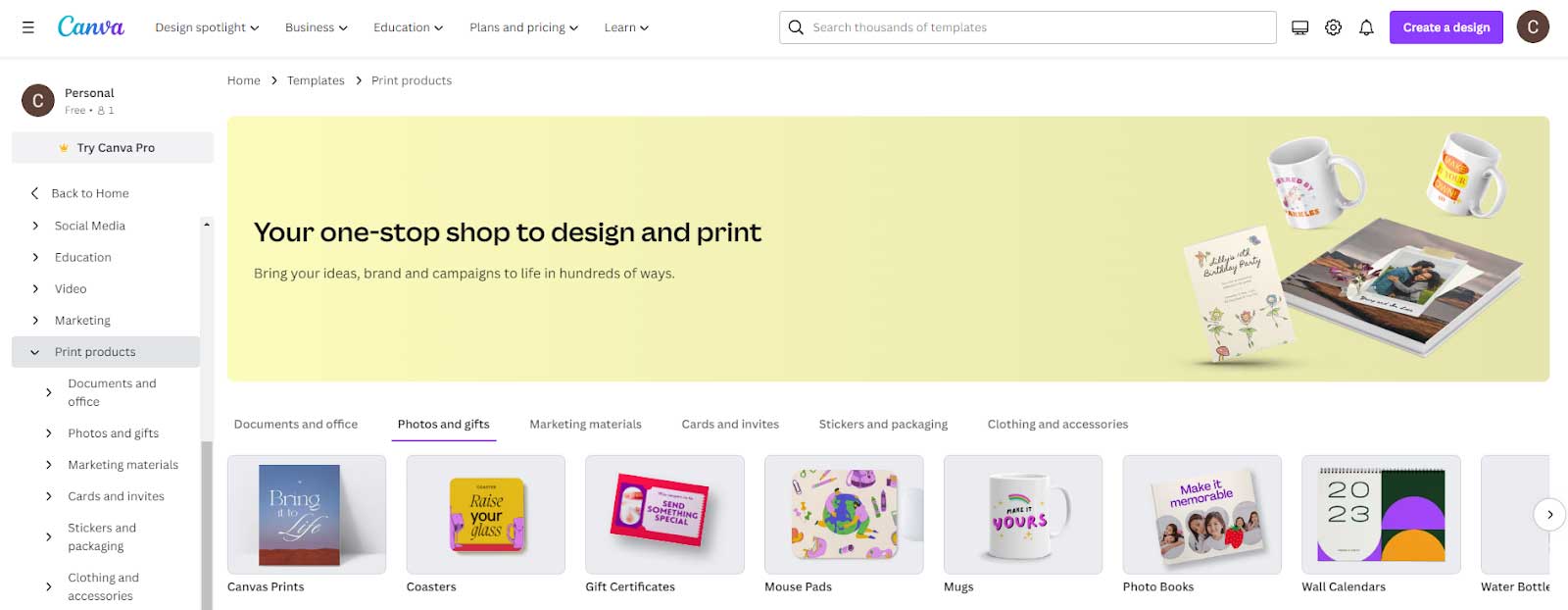
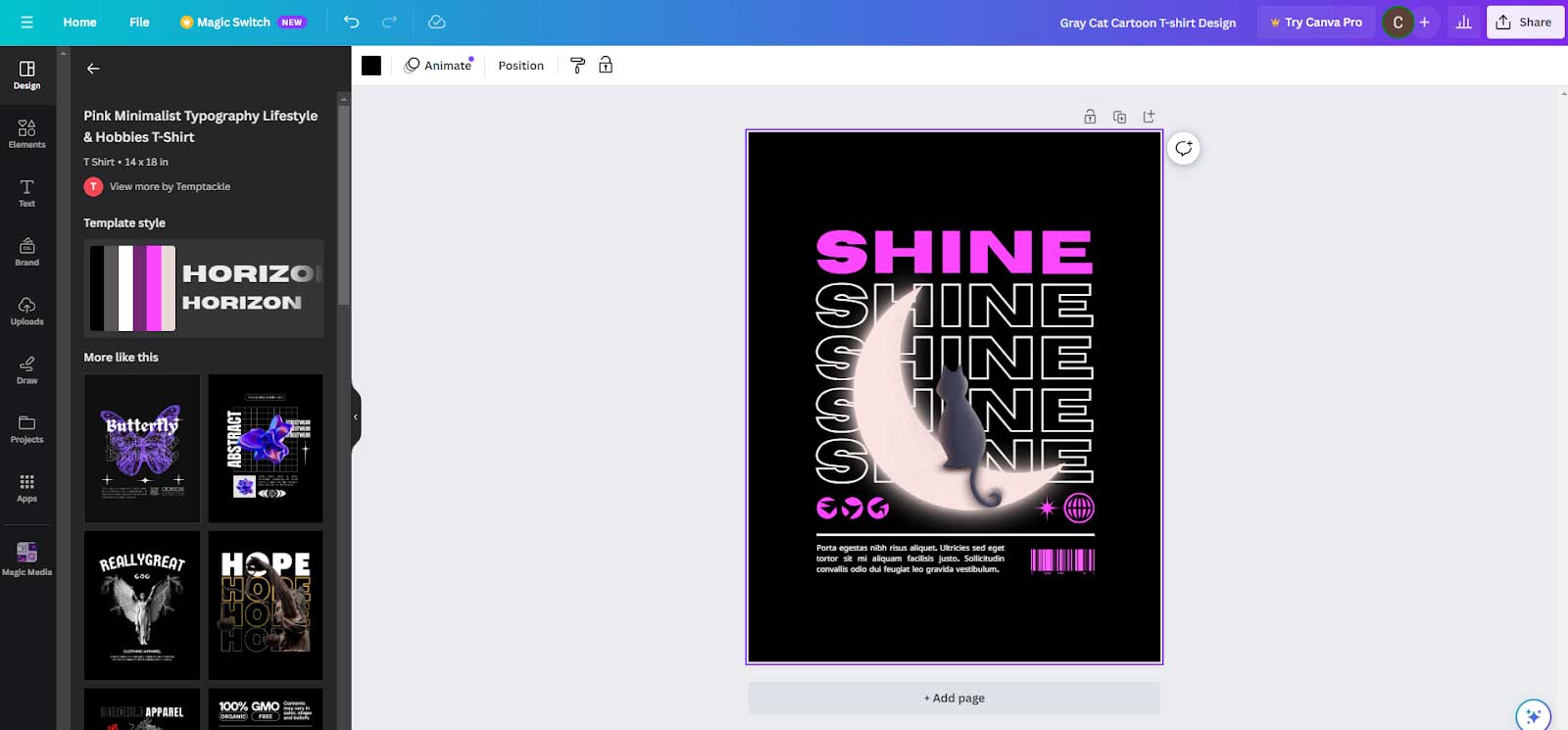
• Placeit
After you finalize the design, you can use Placeit to generate your product mockup. The tool is perfectly designed for print-on-demand businesses and it has all kinds of product mockups, poster templates, and logo designs. With the mockups, you can verify if your design fits the product well and make adjustments if necessary.
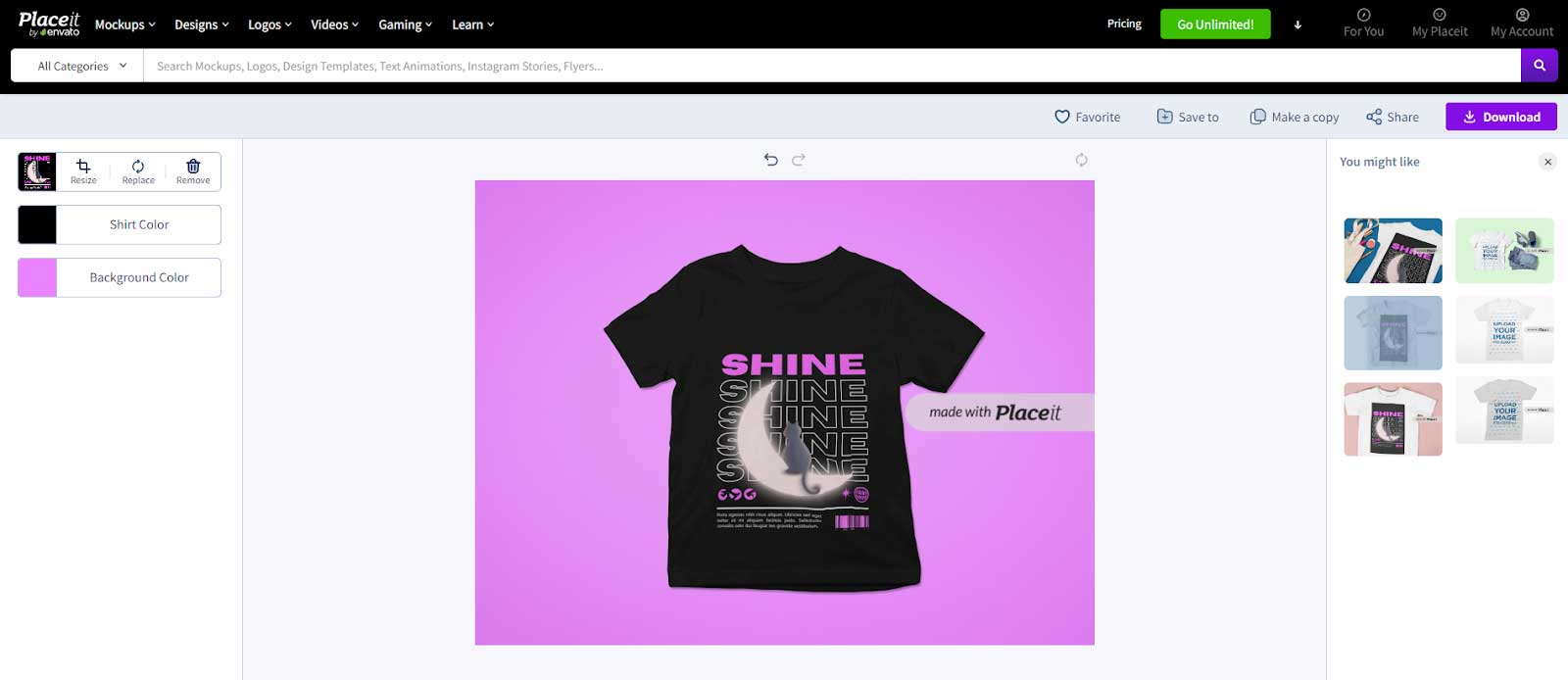
Tips: When creating designs, you must also be careful to avoid copyright infringement, especially when you get design inspiration from games or movies. If your product designs are all original, it is important to apply for copyright protection from your local copyright office.
3. Set Up Your Online Store
After having the designs and product mockups ready, the next step is to set up a store website for the product. Marketplaces that specialize in personalized and customized products are the best places to directly get in touch with your niche-focused audience.
• Etsy
Etsy is a marketplace platform with a large and active customer base that actively seeks out unique and personalized products, making it an ideal marketplace for print-on-demand items. It has integrations with various print-on-demand suppliers, which will streamline the order fulfillment process, allowing you to focus on designing and marketing your products.
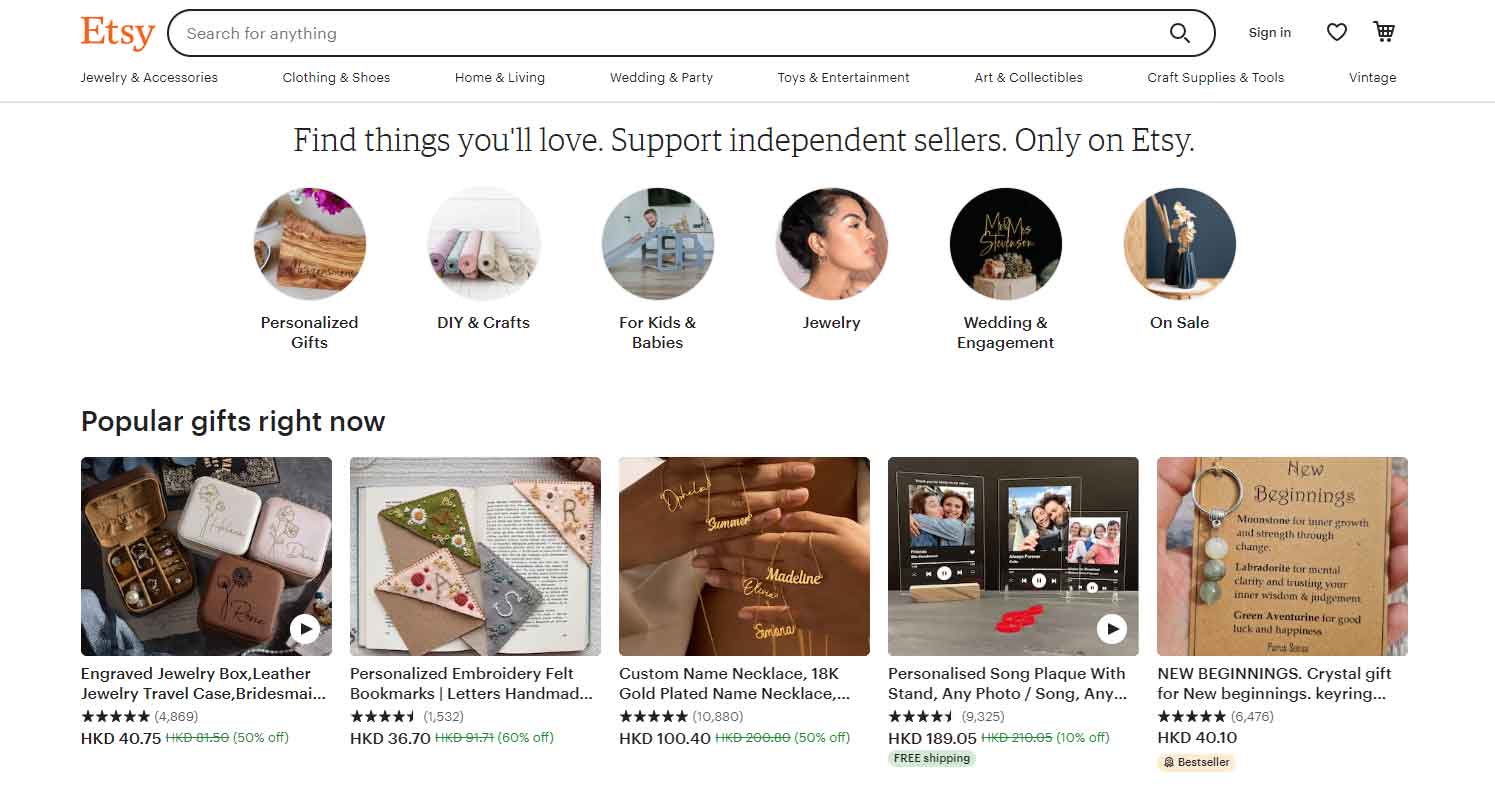
• RedBubble
RedBubble provides a diverse range of print-on-demand products. In addition to shopping for unique products, it allows you to sell products with your art designs on the platform. It will handle the entire fulfillment process for you including printing, packaging, and shipping the product directly to the customer.
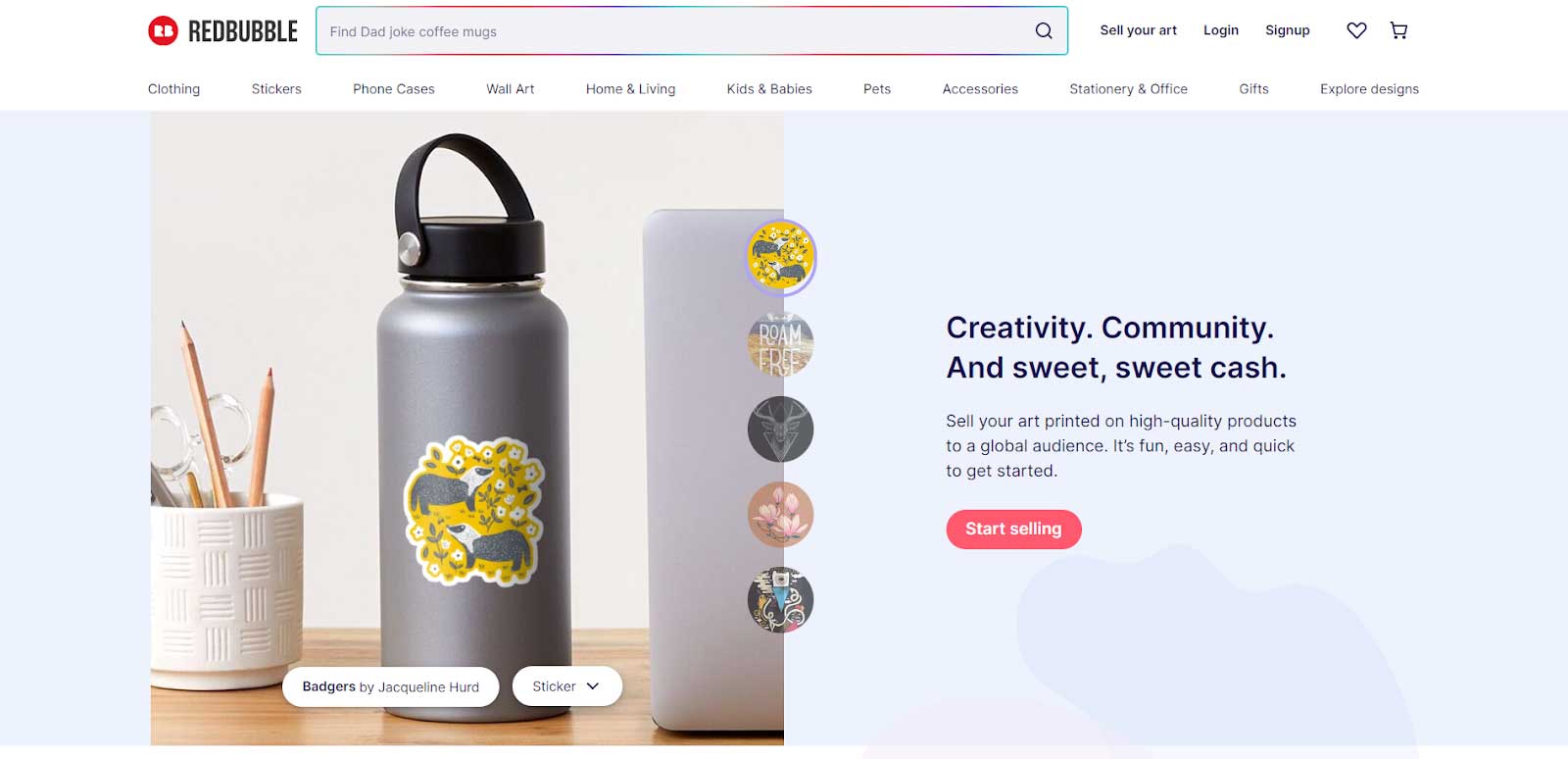
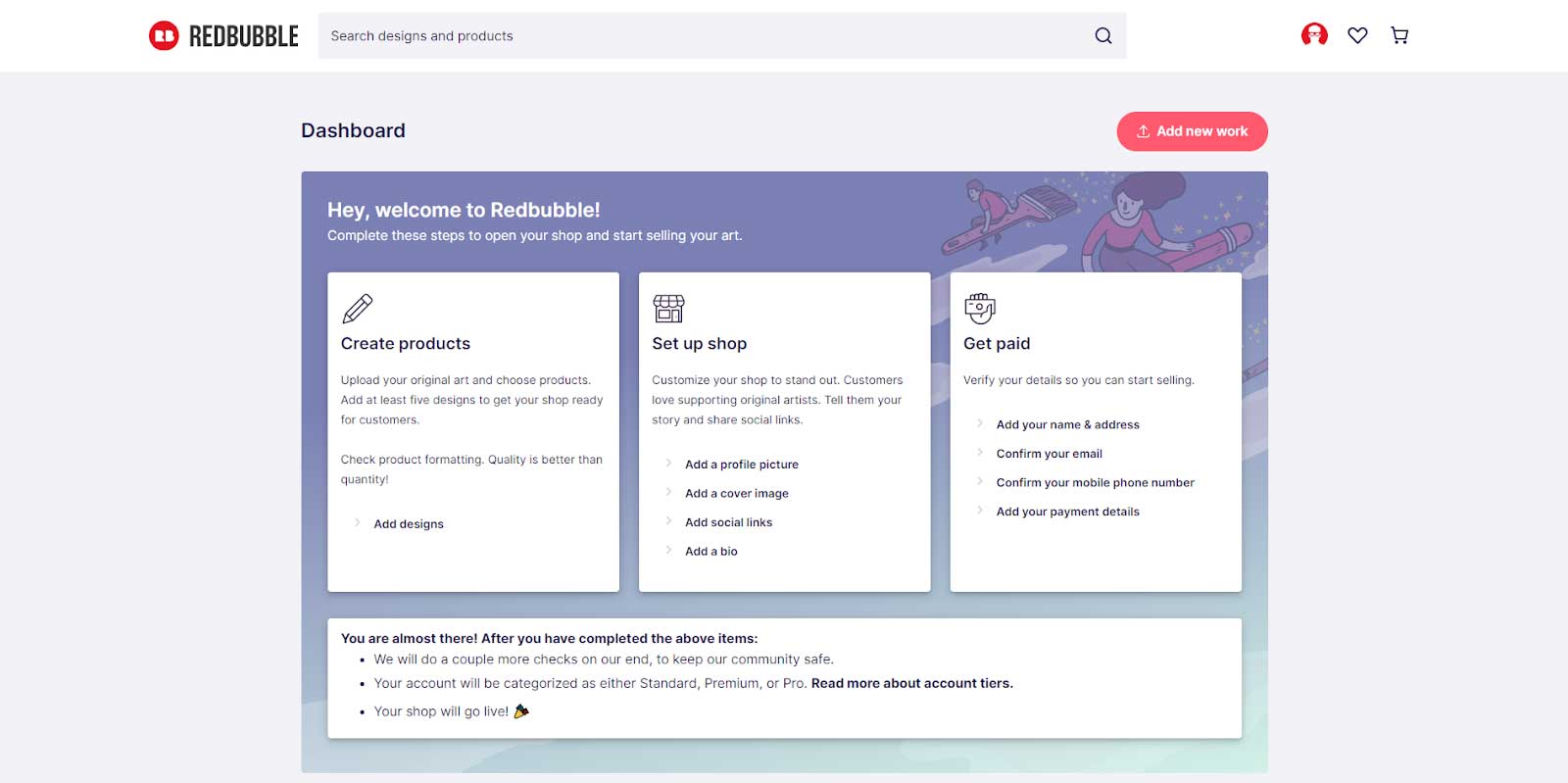
• Amazon
Amazon also provides a print-on-demand service called Merch on Demand. It allows individuals and businesses to create and sell custom-designed products on the Amazon platform. And Amazon will print and ship the products. With millions of customers shopping on Amazon regularly, you will have the opportunity to reach a wide audience and generate sales.

• Ecommerce Websites
Like dropshipping, you can also choose to build your product page with some popular e-commerce website builders such as Shopify, Wix, Squarespace, etc. These tools give you more flexibility to create personalized product pages with your brand identities.
Tips: Optimizing your product listings is crucial once you're ready to start selling. Be sure to upload high-quality product images. You can also use ChatGPT to generate unique store design ideas, and product descriptions to highlight the differentiators of your customized products.
4. Find Reliable Print-on-Demand Suppliers
Now you know that some print-on-demand websites will take care of the order fulfillment process for merchants. But if you sell with an independent online store with Shopify, Woocommerce, and others, you’ll need to find a print-on-demand supplier to help you handle the product printing and shipping. When choosing a supplier for print-on-demand products, you should consider the following key features.
• Wide range of products
• Easy to use interface
• Reasonable product cost
• Support store integrations
• No minimum order quantity
• High-quality product printing
• Fast printing and shipping
• Responsible merchant support
There are already many print-on-demand websites that you can integrate your online store with. And they provide a platform for you to create product designs and help you connect with print providers to fulfill your orders.
• Printful
Printful is a print-on-demand website where you can buy or sell customized products with your own designs. It provides a powerful design maker and mockup generator to simplify the design work. And it integrates with massive ecommerce platforms to allow you to directly upload the designed products to your online store.
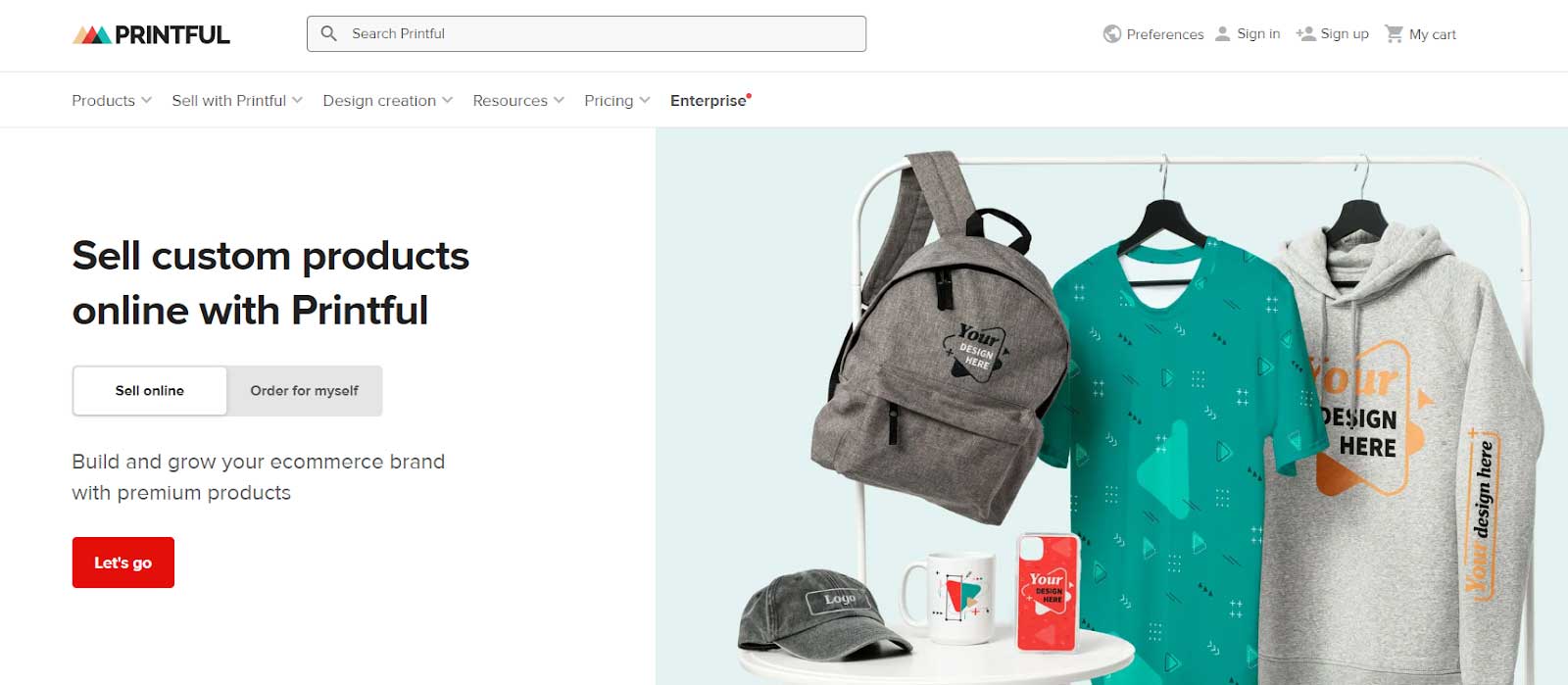
• Printify
Printify is one of the most popular one-stop platforms for print-on-demand businesses. It allows you to create customized products from t-shirts, mugs, hoodies, stickers, etc., and choose from various verified printing suppliers to fulfill your orders.
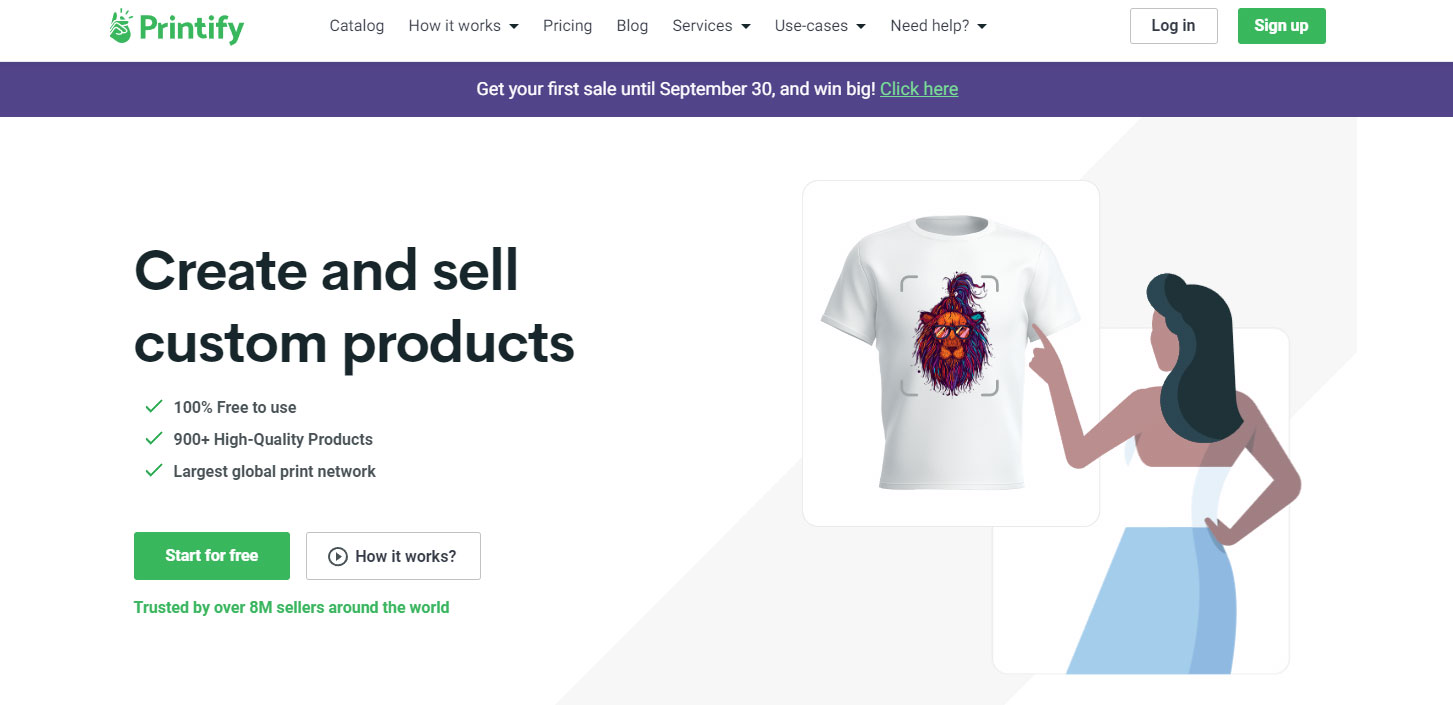
• Gelato
Gelato is a print-on-demand fulfillment platform that enables sellers to produce customized products in the destination country. It automatically sends your order to the nearest printing facility so the products can be produced and shipped locally, with no minimum order.
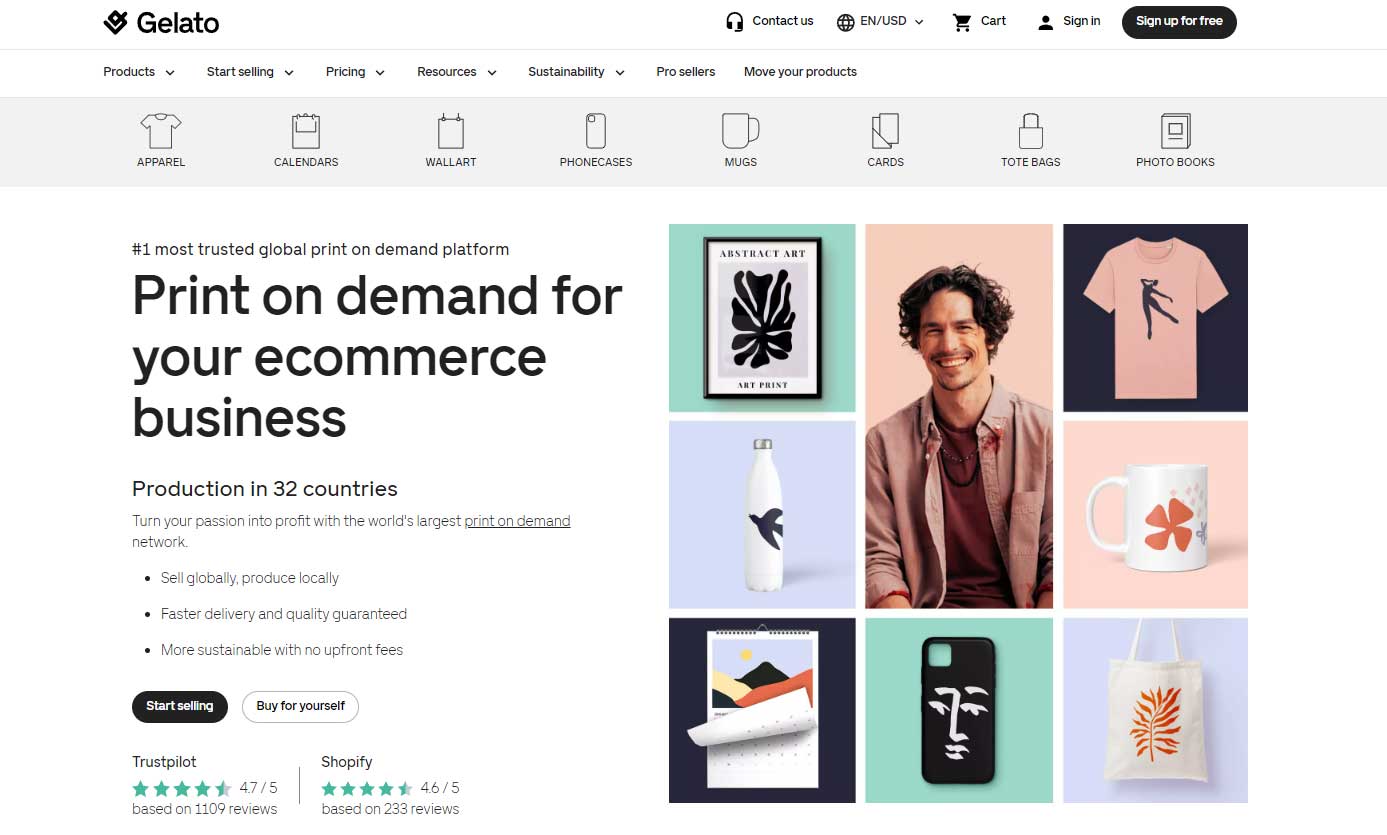
• Sourcing Agent
If you are going to run a print-on-demand business focusing on personalized gifts to meet the diverse demands of your customers, then you may have to find a sourcing agent like CustomizingBox with a wider range of products and print-on-demand services. It allows you to customize products and packages with personalized photos, names, or your brand logos and designs.
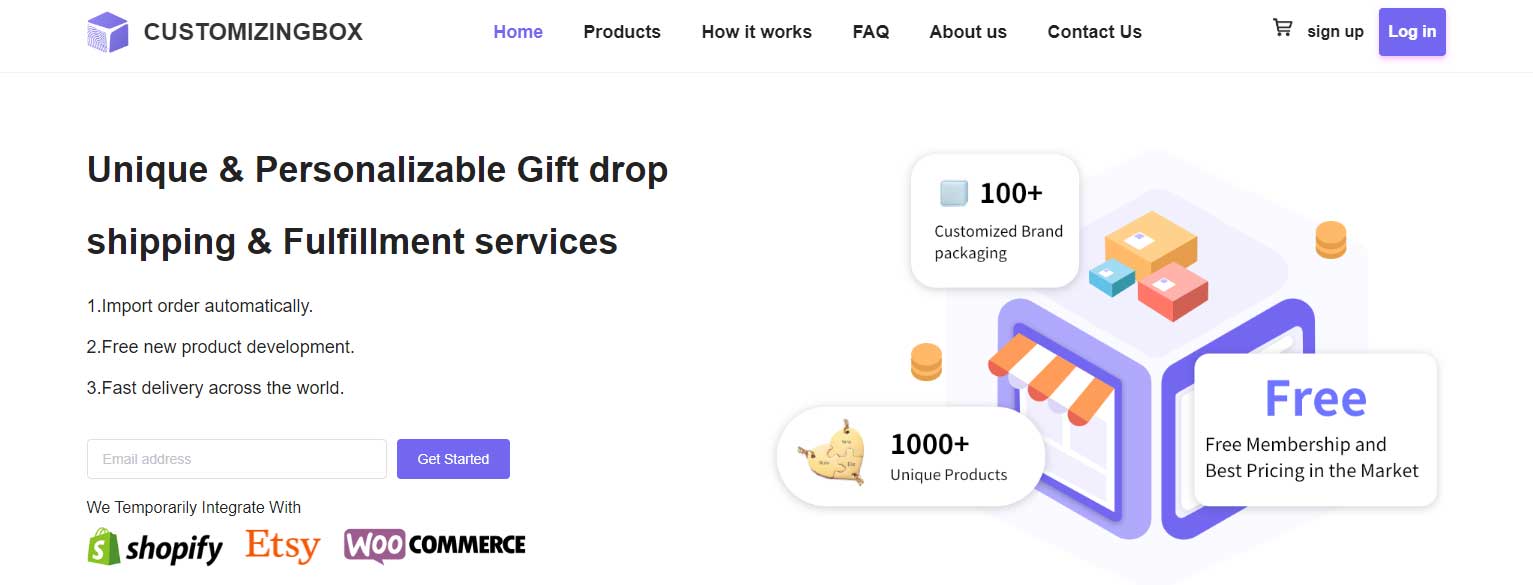
Tips: The supplier you choose mainly affects the product quality and customer satisfaction. It is recommended to order product samples to evaluate the quality of printing.
SourcinBox is a dropshipping platform that also provides brand customization services that allow you to print your brand logo, or designs on products and packaging. It can be a great dropshipping supplier for you to print your brand identities on products.
5. Market Your Products
The next step is promoting your print-on-demand products. The fastest way to get your products exposed is to publish advertising on marketplaces, social media, and Google. Besides, there are many ways of free promotions you can use to build brand awareness and customer loyalty.
The easiest way to get started is creating your social media accounts on platforms including Facebook, Instagram, TikTok, Pinterest, Youtube, etc. And then share posts regularly for your products and website links to build connections with your target audience.
Blogging is a long-term approach to help your store website with SEO and gain organic search. You can create content about what you sell or related topics that appeal to your target audience.
You can also partner with influencers or bloggers in your niche who have a strong following and engage with your target audience. The collaborations can include sponsored posts, product reviews, or giveaways to generate buzz and reach a wider audience.
Email marketing is essential when you have a customer base, it is recommended to build an email list by offering incentives like exclusive discounts or content. By sending regular newsletters to your subscribers, featuring new product launches, promotions, or personalized recommendations, you can nurture customer relationships and drive repeat purchases.
Tips: Since you’ll have multiple social media to manage and massive promotion work to do, you can try some AI tools designed for e-commerce businesses to streamline your marketing work.
Conclusion
Building a print-on-demand business offers tremendous opportunities for creative entrepreneurs to showcase their designs, reach a global audience, and generate revenue. By following the steps outlined in this guide and staying committed to continuous learning and improvement, you can establish a thriving print-on-demand business. So, it’s time to turn your creative ideas into reality!

